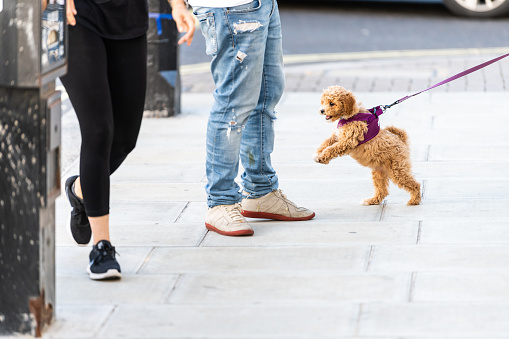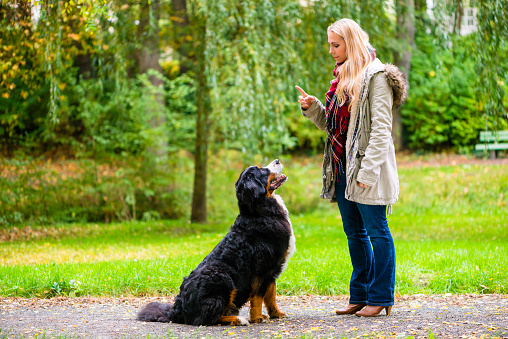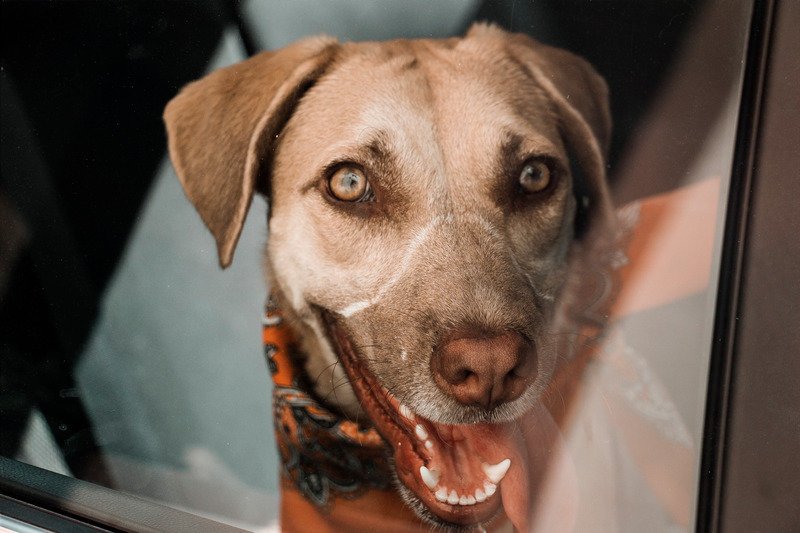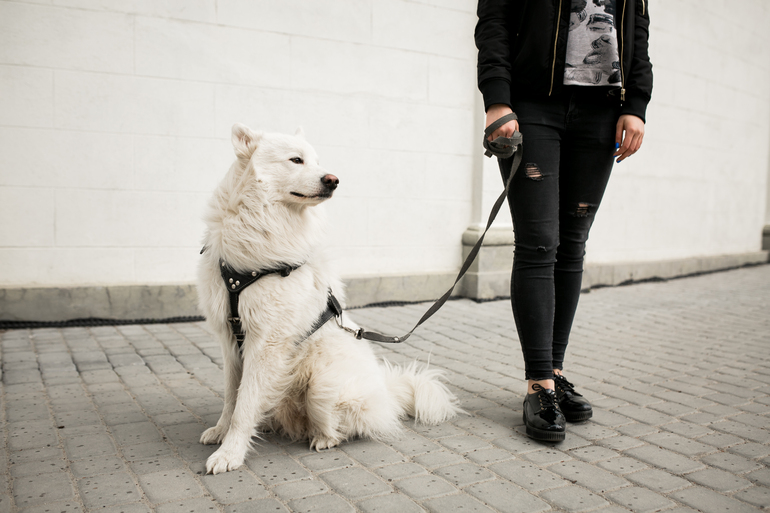
How often do you find yourself in a situation where you need to strain the leash while on a walk with your paw friend to prevent him/her from jumping on passersby? Maybe it is not so frequent, but when it happens you feel embarrassed about your dog’s behavior and try to go away as quickly as possible. Being constantly on the alert for your dog to misbehave, can ruin every nice walk and cause stress instead of providing relaxation.
If you do not want to deal with this type of situation, you may find our tips on how to stop a dog from jumping at strangers on walks, very helpful.
Why Do Dogs Jump?
If we go back to the dogs’ ancestors-the wolves, we can say that wolf pups jumped on their mothers as a kind of indication to her to feed them. As you may already know, dogs’ mothers feed their pups by regurgitating the food consumed earlier and letting puppies consume the substance. Since puppies tend to mimic behaviors, they are likely to jump on people the same way they used to jump on their mothers. Pups see us as pack members.
Another reason why puppies jump is that this is part of playing.
You may unintentionally encourage this behavior without even realizing it. Instead of encouraging the dog to behave properly, some owners reinforce bad behaviors by paying attention to the dog, giving him/her a treat, a toy...anything just to stop misbehaving. This is a completely wrong approach. The more you reinforce a certain type of behavior the more often it will occur in the future.
Also, if you get excited when your pup jumps, as he/she is so cute while doing it, you show him/her that this behavior is desirable. If you try to punish your canine, the punishment may seem like a game to him/her, which will encourage him/her further to misbehave.
Even though it may seem kind of cute and totally harmless and some passersby are likely to enjoy it (valid for people who love dogs and are not afraid of them), it can become a serious problem, especially while in public. We as responsible owners need to address jumping as behavior in a timely manner if we want to make sure that it won’t become a bad habit.
What Shouldn't We Do?
We would not recommend that you punish the dog by using any type of verbal or physical aggression.
Also, you can not resolve the problem by only ignoring your canine. Ignoring certain behavior can be used as a part of the solution, but ignoring itself will not bring the wanted results.
Raising your knee as a primary reaction to protect yourself from an approaching dog, who wants to jump on you, is quite normal. However, if the jumping dog is of a small breed, you can hurt him/her. If the dog is of a large breed, you will definitely end up on the ground and hurt your knees. Also, children or the elderly are not likely to be able to protect themselves by using this method.

How to Address Jumping on People as a Behavioral Issue?
Equipment At Home
Yes, you can use proper equipment even at home prior to moving outdoor. House-line is a type of equipment for indoor control. It looks like a short leash that will need to be attached to your paw friend’s harness. It can be very helpful when you have guests or any type of visitor, as you will be able to have control over your dog and prevent him/her from jumping. Another type of equipment you can use at home is an exercise pen. You can let him/her sit down and settle so that you give him/her access to the rest of the house.
Outdoor Equipment
The so-called “No-pull” harness can do a great job restraining your dog from jumping on people in a non-painful way. A harness is a better option than the leash-collar combo, as you still have control over your dog but at the same time do not make him/her feel uncomfortable and eventually injure him/herself when pulling on the leash.
Training
Only restricting your dog from jumping on strangers without properly training him/her will be only a short-term solution. By training your dog you are teaching him/her that good behaviors will bring good results.
Training a new behavior should always start in an environment where there are no distractions. You also should prepare your dog’s favorite treats, that you will give him/her as a reward for the wanted behavior. For training new behaviors, especially if your dog finds it very difficult to remain focused, you should give treats of a high value. These are the treats that your dog likes the most and that are usually not given outside the training sessions. For example, these are turkey, beef, liverwurst, string cheese...etc. The harder the task the greater the reward.
Easy commands to teach your dog to not jump are “sit” and “four feet on the floor”.
Four Feet on the Floor
At the beginning of the training session, you can tether your dog to an item at home and start slowly moving toward him/her. If he/she initiates jumping, you should stop and take a step back. Once he/she remains calm and has all feet on the floor, you can praise and reward him/her. After several repetitions, your canine will understand that he/she will get what he/she wants (treats and you coming closer) when he/she keeps all four feet on the floor.
After a few more repetitions you can try practicing these steps without tethering your dog. Once he/she seems to have understood what behavior you want him/her to show, you can add a cue word/cue words like “floor” or “four on the floor”.
An alternative to tethering your dog while practicing is putting a leash / house-line on him/her and asking a family member or a friend for help. They should gently restrain the dog from jumping while you are practicing.
Sit
If you want him/her to specifically get in a sitting position, you can either lure him/her with a treat or wait for him/her to sit on his/her own and reinforce the behavior.
In the first scenario you need to show him/her a treat and then slowly start moving it above his/her head. Your dog is likely to want to keep the treat in his/her sight and end up sitting down. At this point, you should click and reward him/her. Over time, you can start implementing the “sit” command as a cue word.
The second method is related to the natural behaviors that dogs show. You should watch your dog and once he/she sits, you need to click with the clicker and reward him/her. If you are not a fan of clickers as training devices, this is totally fine. You can directly replace the clicker with a vocal command. However, there are many benefits from these devices.

Practicing with Guests and Passersby
After enough repetitions, you can do a quick evaluation of your dog’s progress. When guests come visit you, give your canine a command to sit or remain on the floor. Reward him/her right away after he/she fulfills it. Also, you can give your guest a treat to provide your dog with. If your dog still has not mastered the command, you may need to keep practicing with a leash / house-line on him/her a little longer.
Over time, you can keep practicing at busier locations like local parks. When you see a passerby approaching, give your paw friend a command to sit and reward him/her immediately when he/she does it. Also, you can ask passersby (at some point you feel much more confident in your dog’s skills) to give your canine a treat.
Important Things to Remember
When practicing the steps outdoor, keep a distance from passersby at the beginning. Say the cue words at a longer distance, when you notice a stranger approaching you and decrease the distance gradually over time. Have your dog under control, especially in an unknown environment with a lot of distractions and people around. Do not forget to reward your dog for remaining calm and with his/her paws on the floor.













